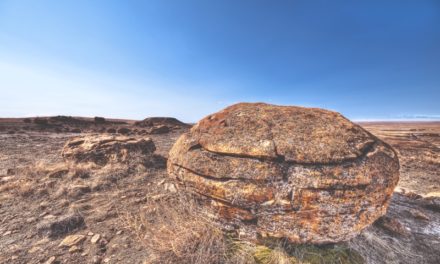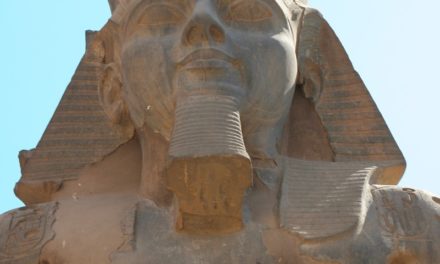![]() As with many of God’s parables and allegories, the real story is couched in figurative language. And what a story this is! It is one of five battles God’s people will need to fight and how they are promised victory in each one. Early in the Biblical record giants were mentioned (Genesis 6:4). However, out of all the giants, only seven were specifically discussed, and all of those as enemies of God’s people. As we read about these giants, and break the GIANT CODE in which most are described, we will see pictured in them real enemies we fight today—GIANT enemies that we are incapable of fighting alone. God also used a GIANT image to depict a brief summary of the powers that will rule the world until the end of time. It is recorded in Daniel 2. Is there any connection with this giant and the other giants mentioned in the Bible? Yes! In five of the seven giants (recorded in typical Bible code), we find an accurate parallel to the different powers of Nebuchadnezzar’s image. In this perspective we see the Daniel 2 image as also depicting the worldly forces aimed against God’s church down through the ages. However, in the five giants we will not only see the major forces vying for mastery of our heart, but also the different helpers God provides to help us do battle with each one… and come off the victor!
As with many of God’s parables and allegories, the real story is couched in figurative language. And what a story this is! It is one of five battles God’s people will need to fight and how they are promised victory in each one. Early in the Biblical record giants were mentioned (Genesis 6:4). However, out of all the giants, only seven were specifically discussed, and all of those as enemies of God’s people. As we read about these giants, and break the GIANT CODE in which most are described, we will see pictured in them real enemies we fight today—GIANT enemies that we are incapable of fighting alone. God also used a GIANT image to depict a brief summary of the powers that will rule the world until the end of time. It is recorded in Daniel 2. Is there any connection with this giant and the other giants mentioned in the Bible? Yes! In five of the seven giants (recorded in typical Bible code), we find an accurate parallel to the different powers of Nebuchadnezzar’s image. In this perspective we see the Daniel 2 image as also depicting the worldly forces aimed against God’s church down through the ages. However, in the five giants we will not only see the major forces vying for mastery of our heart, but also the different helpers God provides to help us do battle with each one… and come off the victor!
- Og, king of Bashan. Though most often referred to, the least is known about him. He was the only giant called a king, and usually associated with Sihon, king of the Amorites. We can only assume his size (12-13 feet tall) by reference made to his bed (4 cubits wide and 9 cubits long – Deut. 3:11). No weapons were mentioned that he might have used to provoke the children of God, and his demise was at the hand of Moses or those under his command. Since Og was a resident of the land of promise, his kingdom was divided among the sons of Gad and Reuben, and half the tribe of Manasseh (Numbers 32:33). And, according to Numbers 21:35, he, his sons, and all his people were eliminated, so as not to harass God’s people any more. Consequently, it doesn’t appear he has a place in the kingdoms of Daniel 2. Daniel’s kingdoms each had their day of power but continue to influence earthlings till the close of time. It appears Og represents the unrecorded challenges to God’s people, the private and personal struggles every child of God has, but struggles we and Christ alone must battle. The victories gained are unique and personal only, not common to the whole church, like with the last five giants.
- Goliath. The most detail is given about him. We know his name, where he grew up, his size, his weapons, his armor and what it covered and what metal was used to make it, how he provoked God’s people, who killed him, and how his opponent did it. Goliath is called the father of most of the other giants that followed, and, as the “chief” of giants, represents the Father of Sin, the Old Serpent, called the devil. His challenge is accepted directly by David, a representative of Christ. This contest is a brief summary of the Great Controversy between Christ and Satan. We do not cover Goliath in this study.
3–6. The four “sons” of the giant. We assume the “giant” mentioned as the father (or, in the Hebrew reckoning of familyhood, as the chief representative), was Goliath, since Og’s family was obliterated. Goliath and his “sons” were all Philistines, all residents of Canaan, the land the Israelites were to inherit. But it was in God’s providence that His people were to “conquer” the land, to drive out or obliterate their enemies. This was to be an object lesson to God’s future Israel who were also to prepare to enter the Promised Land (New Earth). Consequently, we can assume these giants represent common forces and influences God’s people must face and conquer in their personal preparation for inheriting the New Earth. It is, in type, a shortened version of Pilgrim’s Progress. In this story deliverance comes by warriors representing applications of heavenly principles. As we study them we shall find a close parallel to the 4“metal” kingdoms representing the earthly dominions from Daniel’s time to the present.
7. The Egyptian. This last giant is very interesting and puzzling. He is not named. He was not a resident of the Promised Land. He wasn’t defending his own turf. He was out of place. He apparently wasn’t even connected with a band of marauders. Why he was threatening the Israelites and how he got so intimate with them is uncertain. But his presence in the lineup of giants is certain. And it appears he does help us understand the fifth element, the clay kingdom, in Daniel 2, and a dimension of final victory essential to the remnant at the end of time.
We will be studying these last five giants individually to understand better the forces we contend with, some of which we are only to rest in Christ’s victory, and others we are to be actively engaged in the battle. Some battles are personal, and some battles we fight for and/or with others. WHAT INITIATED THIS STUDY The inspiration for this study came from two books and an event. First, an awareness that the whole Bible is an awesome work of God. There is nothing in it that cannot perfect (mature) the reader/believer and furnish him/her with everything needful for a wonderful and productive life to glorify His name. Only a divine mind could orchestrate such a Book.
2Ti 3:16-17 All scripture is given by inspiration of God, and is profitable for doctrine, for reproof, for correction, for instruction in righteousness, that the man of God may be perfect, throughly furnished unto all good works.
Second, a little book called Education, written by a popular author/speaker of the 1800’s, encouraged me to not be content with a surface understanding of God’s word, but to expect greater blessings by more diligent study.
The Bible contains all the principles that men need to understand in order to be fitted either for this life or for the life to come. And these principles may be understood by all. No one with a spirit to appreciate its teaching can read a single passage from the Bible without gaining from it some helpful thought. But the most valuable teaching of the Bible is not to be gained by occasional or disconnected study. Its great system of truth is not so presented as to be discerned by the hasty or careless reader. Many of its treasures lie far beneath the surface, and can be obtained only by diligent research and continuous effort. The truths that go to make up the great whole must be searched out and gathered up, “here a little, and there a little.” Isaiah 28:10. When thus searched out and brought together, they will be found to be perfectly fitted to one another. E.G. White, Education, p.123 [emphasis mine]
The “event” came one time while I was reading my Bible through. I was aware that “in the mouth of two or three witnesses a matter is established” (Deut. 19:15), so when I came across an account of some giant battles in two different places in the Old Testament it caught my interest. Why were these battles repeated? I started comparing them and noted some similarities and some differences. Perhaps there’s information here that could enhance spiritual life, I mused. And thus began a several year study on “Breaking the Giant Code.” HOW THIS STUDY WAS DONE There are four ways conclusions were made to break the “code”.
1. When information was given I first looked for other verses throughout the Bible that might help me understand what the object or name could be representing, or to give me more detail on the subject. And from that data different ideas were noted as possible solutions. This was then brought into the study. (e.g. When the weight of a spearhead was given , I looked for other places in the Bible where the the same number was mentioned to see if there may be a similarity that could open up the study.)
2. When information was not given (that I expected should be) I looked in complementary areas of the Bible to see if I could find the missing facts. If they were not to be found I concluded it wasn’t important to understand the giant or his adversary. (e.g. If a weapon was not mentioned it was considered the giant had another agenda than to directly slay his opponent.)
3. I tried to leave no stone unturned. If the name of the giant or a city was given, I looked up what the name might mean in the original language (using Strong’s Exhaustive Concordance of the Bible). But I also looked up other places the individual or town was mentioned in Scripture, to see what other connections it might have on the story. Then I would go to various Bible encyclopedias to hopefully gain some more insights from history or archaeology. This proved very helpful at times, like why Gath was such a popular location for both camps (Philistine and Israelites).
4. Sometimes details would lack a tie-in element, requiring me to supply one to make the study flow more smoothly. At that point, claiming James 1:5, I would seek for a word or thought that seemed practical, logical, and in harmony with the intent of 2 Tim. 3:16-17. (e.g. One giant that seems to fit the second kingdom in Nebuchadnezzar’s dream is pictured as offering God’s people a shallow bowl. By harmonizing these two stories —the second giant and the second kingdom represented by silver—I took the liberty to identify the shallow bowl as one made of silver. In such instances the word or thought supplied is not given importance or significance. It was only used to help the story line.)
Join me now as we unwrap the GIANT CODE. We will begin with the first giant, Ishbibenob, and then progress through each of the others in order. ISHBIBENOB If you want to go directly to a particular giant then go back to the beginning of this page (where you can see the header with the different tabs). Put your cursor on “Giants”. A dropdown menu will appear (Introduction). Then move your cursor to “Introduction” to see another dropdown menu. This will include all 5 giants. You can click on any one of them to go directly to that giant.






